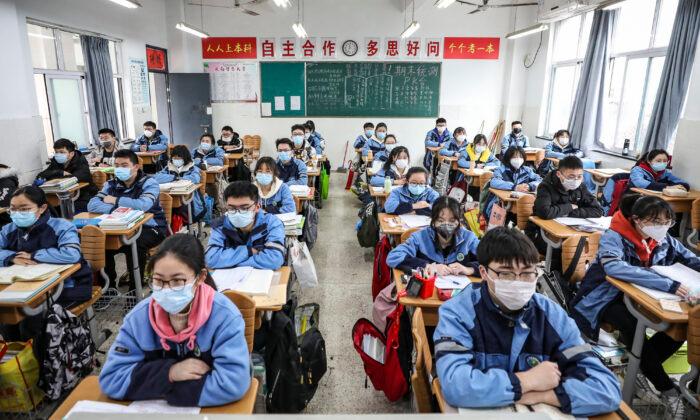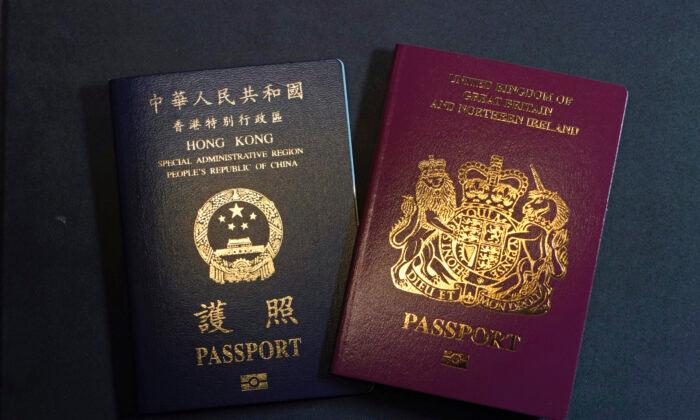Their current state of operations is also related to the current wars. Since the Taliban is not likely to engage fighter jets in Top Gun-style dogfights, the roles of the U.S. Air Force (USAF) in Iraq and Afghanistan has helped define a new kind of war.
“The mission of the United States Air Force is to fly, fight, and win—not just in the air, but in space, and cyberspace,” said Brig. Gen. Richard Devereaux.
Devereaux is the commander of the USAF Expeditionary Center that is located at the Joint Base McGuire-Dix-Lakehurst in New Jersey. The center conducts advanced training and pre-deployment training for airmen preparing to go overseas.
It works as one of the USAF’s two main advanced-training facilities, the other being the USAF Warfare Center in Nevada, which focuses primarily on airspace and cyber power.
With troops facing a new kind of enemy, the center regularly updates its courses to meet the needs of ground troops and those whom the troops protect. Devereaux said he believes that the center is unrivaled in training airmen to do just that.
The center provides training on advanced skills, ranging from how to identify an improvised explosive device (IED), to loading aircrafts, to providing first aid while under fire. They hold to the saying “from the flight line to the front line.”
“In order for them to do their jobs in this uncertain environment where there are threats nearby, they’ve got to have combat skills training,” Devereaux said.
The roles of many of the airmen who serve with the USAF are often overlooked. They are the troops behind the supply drops, the eyes behind video reconnaissance, and the operators behind the unmanned aircraft.
There is a common misperception that airmen only operate in the air, says Devereaux, “But we have many ground support airmen who are supporting missions into the airspace and cyberspace, and they are operating in nontraditional roles today.”
In today’s wars, airmen also provide security for convoys, work on explosive ordinance disposal, and deploy directly with other branches of the armed services on the front lines.
Missions in which the airman leave the airbase perimeter and go into hostile zones are called “outside the wire,” and many airmen participate in those efforts.
“The United States Air Force is definitely all in and fully engaged in this war,” Devereaux said, referring to Afghanistan.
Continued on the next page...
Combat Ready
The 2010 Combat Air Force Strategic Plan was released this month after being in the works since 2008. It describes the strategy of “securing the high ground to deliver agile combat airpower to the nation through the joint force.”
The Combat Air Force (CAF) has reached a “crossroad where tough strategic choices must be made to drive our actions and ensure our vision is realized,” says the report. It adds that “although the nature of conflict is unchanging,” there are a growing number of potential threats that need to be factored in, ranging from terrorists to “rising regional powers struggling with world perceptions.”
The plan states that the “potential for conflict is increasing,” and “the future strategic environment will be shaped by the interaction of globalization, economic disparities, and competition for resources.”
In order to stay ahead of current and potential threats, airmen at the USAF Expeditionary Center maintain a two-way flow of information with troops on the front lines. This is done through the center’s tactics, techniques, and procedures branch. The branch’s main purpose is to collect information from the front lines and spread the information across all areas of the Air Force.
This information—such as intelligence on a new type of IED or a new enemy tactic—can then be immediately incorporated into the trainings given to airmen before they deploy.
“If something on the ground changes that requires a change in our curriculum here, we want to make that change rapidly,” Devereaux said.
The quick response to changing threats allows the USAF to avoid losing troops to threats they would not have otherwise known about. With these advancements, troop casualties have been significantly lower.
Since 2001, the USAF has moved 70,000 patients back to the United States from a warzone, and, “One of the wonderful statistics that makes this war different from any other we’ve ever fought is that there is a 98 percent survival rate from those who are injured, even with life threatening injuries,” Devereaux said.
He added that with the Air Force growing smaller, the responsibility of each airman is increasing, as, “All the operations on the globe have to be supported with air movement.”




Friends Read Free